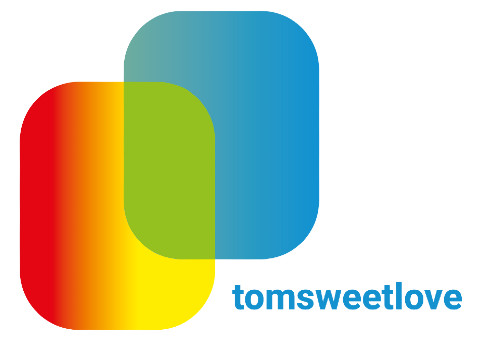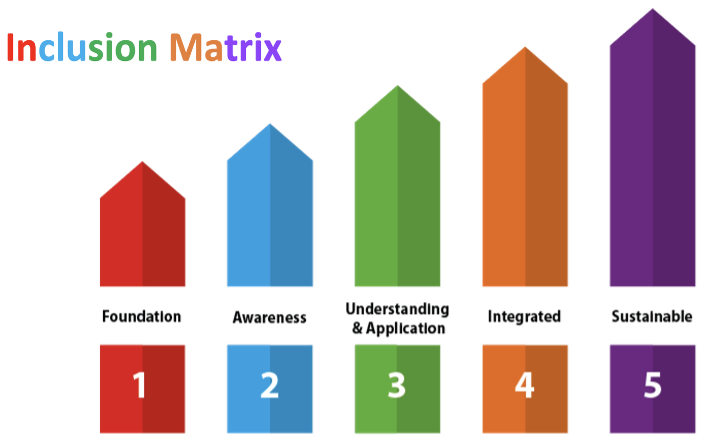We could just as easily have opened this blog article with the question “should my organisation become inclusive?”. There is only one answer to this question and that is a resounding yes.
As a company, you are again on the eve of a fundamental shift that is taking place, similar to the digital shift that started in the year 2000. Great examples of companies that started the digital transformation too late are Blokker, Hema and Inno. An institution like V&D is no longer there. I advise all business leaders to invest in a diverse and inclusive policy today. Why?
5 good reasons WHY you should make your organisation a place where everyone feels good.
1) Societal – Generation Z
Generation Z was born between the mid-1990s and 2012 and is the first generation to be digitally connected since the day they were born.
They think differently about privacy, about personal boundaries, their role in society. This is a generation that is more progressive than the generations before them.
Millennials and Gen Z are often seen as more socially conscious and impact-driven, perhaps as a result of growing up surrounded by the internet and social media. This, in turn, has led to them being more exposed to larger social issues such as diversity and equal opportunity policies.
2) Social movements
#blacklivematter #metoo #idahot2022 #climatechange
Recognisable hashtags that we see a lot of on our timeline on Facebook, Instagram or Tiktok.
The hashtags belong to the social movements of the same name. In this way, these ‘movements’ are intertwined with our social media activities. Social movements start with activating people. That is why social media and social movements fit together perfectly.
Social media have the potential to change the way people get involved. You don’t have to be a powerful speaker. You don’t even have to leave your house. You can build an audience through social media without ever meeting the people you inspire.
And eventually, at some point, people will unite to make the issue known and organise themselves. Be aware that if your company goes against the ideals of these social movements (and this usually happens unconsciously), the movement will target you.
In the long run, people and organisations will adopt a spasmodic attitude. This is not necessary.
Mistakes can be corrected and reputation management will limit the damage considerably. But even better, look at how you as an organisation can outline a sustainable policy with the cries for help from these social movements.
3) Social – recovery plan ‘NextgenerationEU’
800 billion euros. This staggering amount is the budget agreed between the Member States for the recovery plan in response to the consequences of the pandemic. It is a composite amount of possible grants and loans for each Member State.
The Netherlands and Belgium will receive 5.9 and 6 in grants respectively.
Like the UN’s 17 SDGs, the NextGenerationEU plan is built on the “something goes for something” principle.
In relation to diversity, equality and inclusion, the requested projects have to deal with the following themes:
– combating racism and xenophobia
– working towards gender equality and the empowerment of women
– protecting the rights of the LGBTQI community and combating discrimination
As a company, you will be able to apply for these subsidies through the government in the future.
While writing this blog, I have to admit that it is still unclear how a company can claim these subsidies in the framework of a DE&I project, for example a discrimination study.
As soon as there is more information about this, we will certainly report it.
4) Business – a competitive advantage
DE&I is about changing attitudes. These themes are covered in abundance by the most diverse media, but rather in a social context.
But also for the business world there is very interesting reading.
The most insightful reports that have stayed with me as a certified DE&I expert, marketer and especially as an entrepreneur are the McKenzie reports. I literally quote the following conclusion from the report ‘How inclusion matters‘, published in 2020:
“For diverse companies, the likelihood of outperforming industry peers on profitability has increased over time, while the penalties are getting steeper for those lacking diversity.”
This is exactly about the fundamental shift I talked about in my introduction.
Inclusion is a business imperative. In fact, employees who feel highly engaged are almost three times more likely to feel enthusiastic about and committed to their organisation.
Diverse teams are more innovative, more likely to reflect the customer base they are trying to attract, and can even affect a company’s bottom line.
5) Business – employer branding and the war for talent
Diverse organisations are better at attracting the talent they need, especially when it comes to attracting Gen Z. According to data from a Randstad survey, Gen Z will make up a staggering 37% of the global workforce this year.
The Great Resignation, a phenomenon that is happening mainly in the United States and the UK now, is coming to the Benelux this year. It stands for professionals who, because of the pandemic, have been able to think hard about their current job: its content, execution, primary and secondary conditions, relocation, work-life balance, …
Result: about 58% of Europeans say they will consider changing jobs this year, according to a LinkedIn survey among about 9,000 employees
As an employer, your best chance is to show that you are truly committed to DE&I.
To be clear, this is about all diverse groups, not just orientation, ethnicity, religion but also neuro-diversity – for example, stuttering, pwd’s – people with disabilities and so on.
The numbers speak for themselves
I am aware that successful business leaders are primarily guided by business instinct underpinned by hard figures. Here’s a handful of high-profile figures:
- In a recent Monster survey, 83% of Gen Z candidates said that a company’s commitment to diversity and inclusion was important when choosing an employer
- 75% of Gen Z consumers will boycott companies that discriminate on race and sexuality in advertising campaigns, according to a McKinsey study.
- The same McKinsey study found that companies with the most ethnically diverse executive teams were 33% more likely to outperform their competitors.
Convinced?
Where to start now and how far to go?
1) Top to bottom
As a business leader, you may be convinced that an inclusive organisation is ’the only way to go’, but rolling out a successful diverse and inclusive policy can only be achieved if it is supported by everyone in your organisation.
Don’t make it an HR-only project but involve all departments. The HR department can take a leading role, but marketing and communication also have an equally important role in the exposure of the project. Let marketing do what they do best: storytelling about your DE&I policy, visual translation in the internal and external communication, lasting content that appeals to all employees, customers and suppliers.
2) Research
Start with a 0-meting: how diverse is your workforce (gender, nationality, ethnicity, …), how diverse was your recruitment, how diverse are your customers and suppliers, to what extent do you take cultural habits into account.
On the basis of this 0 measurement, you then determine where you are today and where you want to be in the short, medium and long term. Use an Inclusion Matrix – see below.
Would you like to carry out a discrimination study sooner? There are three different research methods that will reveal to you the pain points and what concrete action points will be taken to ‘cure’ them.
3) Inclusion Matrix
The inclusion matrix offers you insight, based on your 0 measurement, into where you are today in the DE&I field and where you can still grow.
You can determine the pace and the stage you want to reach. This is the answer to the question with which this blog article opened. You can go as far as you want because the work is never finished.
Copyright: SuperPeopleCompany.com
Benefits of the Inclusion Matrix:
-
- you spot possible actions that do not yet fit the phase in which the organisation/department is in
- provides insight into where extra attention is needed
- provides guidelines for management and offers structure
- contains KPIs that clearly indicate whether you can move on to the next stage. It makes your project measurable.
Disadvantages:
-
- not all parts of the organisation are at the same stage
- wanting to go too fast
- you are never finished
Conclusion
Having a strategy and executing it is the same as preparing your organisation for the fundamental shift that is now taking place and immediately gaining competitive advantage from this transformation.
At what pace and how far you go, is up to you. But above all, remember:
Your customers and new employees of tomorrow are socially very aware that a company must be a place where, first of all, everyone must have access to it. Secondly, the company is a place where everyone can feel good because of who they are and what they can do. There is no place for discrimination anymore.


